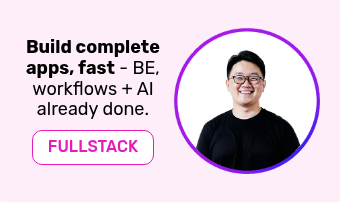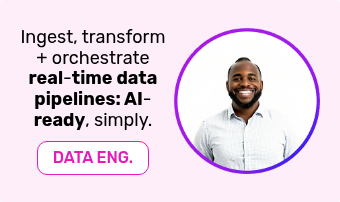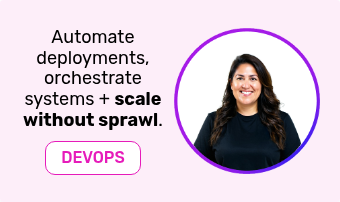Modern businesses don’t operate in static hierarchies or rigid data silos. Today’s customer ecosystems demand a dynamic, real-time approach to data collection, analysis, and activation - and this is where an advanced Customer Data Platform (CDP) excels.
Unlike traditional data structures that rely on predefined funnels or linear lead-contact-account flows, CDPs adapt to your business’s specific needs, creating a modular, ever-evolving system.
Rayven’s Customer Data Platform redefines what’s possible by offering unprecedented flexibility and scalability. Below, we’ll delve into the technical setup, dynamic capabilities, and potential applications of CDPs.
Breaking Free from Traditional Data Models.
Conventional data systems - CRMs, ERPs, or DMPs - often rely on hierarchical data structures (e.g. lead → contact → account). While effective for certain workflows, these structures can limit the dynamic, real-time adaptability required for complex use cases.
An advanced CDP removes these constraints by introducing:
1. Event-Based Data Modelling:
- Instead of predefined hierarchies, CDPs store event-level data (e.g. “page viewed,” “cart abandoned,” “email clicked”) in real-time, providing granular insights into every customer action.
- This data can be queried on-demand to build custom workflows or campaigns without limitations.
2. Schema-Less Data Storage:
- With a schema-less architecture, CDPs allow data from any source - structured, semi-structured, or unstructured - to flow into the platform seamlessly.
- This makes it easy to integrate non-traditional sources like IoT devices, chat logs, or third-party APIs.
3. Dynamic Customer Profiles:
- Unlike static records, customer profiles evolve dynamically, updating in real-time as new data streams in.
Discover how Rayven simplifies data integration and transformation on our Platform Features page.
Technical Features Powering a Dynamic CDP Setup.
Let’s unpack the advanced technical features that make CDPs so versatile:
1. Real-Time Ingestion and Processing
- CDPs can ingest millions of data points per second from multiple sources, including transactional databases, third-party APIs, and edge devices like IoT sensors.
- Use case: A retail business can use real-time CDP data to adjust online product recommendations as a customer browses the site.
Learn more about Rayven’s real-time data capabilities on our Data Integration and Ingestion page.
2. AI and Machine Learning for Dynamic Workflows
- AI models within a CDP enable predictive analytics, churn forecasting, and even proactive customer engagement.
- On the backend, Generative AI (GenAI) simplifies complex configurations like connecting new data sources or creating workflows using natural language commands.
- Use case: A telecommunications provider can use machine learning to predict network outages and proactively notify affected customers.
3. Event Streaming and Webhooks
- Event streaming capabilities allow CDPs to push real-time updates to external systems via webhooks or APIs.
- Use case: A finance company can trigger a webhook to a CRM when a customer crosses a transaction threshold, initiating a personalised offer campaign.
4. Advanced Identity Resolution
- Through deterministic and probabilistic matching, CDPs stitch together fragmented data points to create unified customer profiles.
- This feature is particularly critical for industries handling multiple touchpoints like eCommerce and healthcare.
How CDPs Outperform CRMs: A Technical Comparison.
While Customer Relationship Management (CRM) systems are widely used for managing customer interactions, their limitations become evident when compared to the advanced capabilities of CDPs. Here’s how they differ:
| Feature | CDPs | CRMs |
|---|---|---|
|
Data Scope |
Handles all customer data (event-level, transactional, behavioural). |
Focuses on structured data (e.g., leads, contacts, accounts). |
|
Real-Time Capabilities |
Processes data and triggers actions in real-time. |
Typically batch-processed; lacks real-time flexibility. |
|
AI-Ready |
Built for AI/ML applications, enabling predictive analytics and GenAI-driven automation. |
Limited AI capabilities; primarily relies on manual workflows. |
|
Interoperability |
Integrates seamlessly with diverse systems (IoT, APIs, etc.). |
Integrates well with marketing and sales tools but struggles with unstructured data sources. |
|
Cost-Effectiveness |
Lower total cost of ownership due to automation and flexibility. |
Higher ongoing costs for manual management and rigid workflows. |
|
Personalisation |
Supports hyper-personalisation based on real-time insights. |
Offers limited personalisation options, relying on predefined templates. |
|
Scalability |
Designed for large, complex datasets and evolving data streams. |
Limited scalability; better suited for smaller data sets. |
Why CDPs Are Superior.
- Real-Time Data Processing: Unlike CRMs, which often rely on batch updates, CDPs provide instant insights and enable on-the-fly adjustments to customer interactions.
- AI-Ready Infrastructure: With built-in machine learning capabilities, CDPs can deliver predictive analytics and automate workflows at scale.
- Lower Cost of Ownership: By reducing the need for manual data management, CDPs minimise operational overheads.
- Dynamic Data Models: While CRMs are tied to rigid lead-contact-account structures, CDPs adapt to any data model, making them ideal for complex workflows.
- Unified View of the Customer: CDPs consolidate data from diverse sources, including unstructured and IoT data, creating a true 360-degree customer view.
For more on how CDPs provide an edge over traditional systems, visit our Customer Data Platform page.
Dynamic CDP Applications Across Industries.
An effective CDP adapts to highly specific, technical workflows. Here’s how:
Retail and eCommerce.
- Dynamic Recommendation Engines: Use real-time behaviour to deliver personalised product recommendations.
- Inventory Sync: Automate updates across online and offline stores using IoT integrations.
Energy and Utilities.
- Demand Prediction: Use IoT sensors and ML to optimise energy distribution.
- Customer Notifications: Automatically inform users of peak energy costs based on real-time usage data.
Healthcare.
- 360-Degree Patient Profiles: Combine electronic health records (EHR) with wearables and IoT devices to provide holistic care.
- Anomaly Detection: Use AI to detect irregularities in patient data and alert caregivers.
How a CDP Connects Everything.
The true power of a CDP lies in its connectivity:
1. Backend:
Integrates directly with data lakes, analytics tools, and AI platforms (or have all these native with the platform, as with Rayven!) for advanced processing.
2. Customer-Facing Frontend:
Provides APIs and other connectors for building dynamic customer-facing applications, such as personalised dashboards or mobile apps.
3. Automation:
Pushes insights to external systems, such as CRMs or marketing platforms, to trigger automated workflows.
The Future of Dynamic Data Ecosystems.
With features like schema-less data storage, real-time ingestion, and AI-driven automation, CDPs offer unparalleled flexibility for modern businesses.
CDPs will become the backbone of modern data ecosystems, offering the flexibility, scalability, and intelligence businesses need to thrive. Unlike CRMs, which excel in managing interactions, CDPs drive actionable insights by unifying data, processing it in real-time, and enabling automation at scale.
If you’re ready to revolutionise how you manage and leverage customer data, visit our Customer Data Platform page or get in contact with us today - we'd love to talk and help you to explore how you can assess your needs.




















































